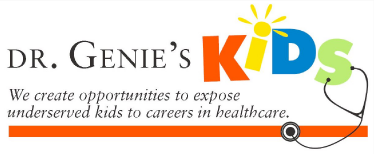Article originally published by People Magazine.
From fun prints to reminding kids about their favorite caped crusaders, these tips might help make parents’ efforts a little easier
Aside from keeping themselves and their families safe as the novel coronavirus pandemic shows little sign of slowing down across the U.S., many parents have the added challenge of getting their kids comfortable wearing facial coverings.
In a June piece for The New York Times, pediatrician and author Dr. Perri Klass says that while older kids “can be a little cranky about adapting to life with masks,” children who are younger are, despite what many may think, actually “perfectly placed to learn a new drill.”
“They can be the family monitors, reminding their parents not to forget their face coverings when they leave the house, nudging them to pull up face coverings that slide down off their noses, sitting in disapproving judgment on naked-faced runners or puffing smokers who come too close,” she adds.
And while the American Academy of Pediatrics does not recommend cloth face coverings for anyone under the age of 2, there’s a sweet spot where it might take a little creativity for younger kids who may not be quite ready to take on the responsibility of being the rule-enforcer.
Here, we’ve rounded up a few tips for parents to help make mask-wearing a more enjoyable experience — both for kids and their moms and dads.
1. Remind them that some of their favorite characters — and real-life people — wear masks.
From the characters in PJ Masks to Batman, Spider-Man, Deadpool, Black Panther and Iron Man, masks are a huge part of superhero lore. Don’t be afraid to tap into that gold mine.
For the non-superhero crowd, young children may even have older siblings, cousins, friends or other children they look up to who can emulate the behavior for them.
“Show your child pictures of other children wearing [masks],” the AAP recommends.
2. Purchase (or make!) various face masks in fun prints that kids can pick out as part of their outfit for the day.
There’s no reason a mask can’t be another fun part of a child’s outfit! Talk to them about some of their favorite day-to-day ensembles, and how a mask can complement these looks even further.
Tons of online retailers, like Amazon, have a treasure trove of options to choose from, while existing child-focused companies like Cubcoats have seamlessly leveraged their previous business models into cute facial coverings.
Even a trip to Etsy’s online marketplace will give you more designs than you know what to do with — like from seller MadisonJamesCo, which offers 70 different style options (and a filter pocket!) for its 100 percent cotton cloth masks.
3. Get children used to wearing a mask around the house.
“Practice wearing the face covering at home to help your child get used to it,” the AAP recommends. This might mean moms, dads and siblings need to get in on it too — but everyone getting used to the practice is an added bonus!
While spending time at home, “Look in the mirror with the face coverings on and talk about it,” the AAP advises parents on how to “help make [masks] seem less scary” for kids.
“With younger kids, introduce a sense of play,” KidsHealth.org says. “Kids can pretend to be a doctor or nurse while wearing their masks. They might want to use a doctor kit and ‘take care’ of a stuffed animal or doll.”
4. Make it a fun summer project.
Why not combine kids’ inevitable boredom that comes along with staying home and social distancing with a fun project that will also protect them?
For the parent who likes an all-in-one solution, Little Medical School sells a Face Covering Kit for $25 that comes with two cloth face coverings, a 6-inch tape measure, a sticker sheet, a certificate and an activity card.
A portion of the proceeds from the kit’s sales go to Dr. Genie’s Kids, a foundation benefiting “the children of first responders and healthcare workers, who during the current COVID-19 crisis are saving lives and making sacrifices every day to help our communities.”
It’s important to remember that while most children older than 2 can wear masks, there are exceptions. The AAP says that “special precautions may be needed” for kids “with severe cognitive or respiratory impairments,” who may have difficulty with wearing a mask. They also point out that “children who are considered high-risk or severely immunocompromised are encouraged to wear an N95 mask for protection” as opposed to a simple cloth mask.
“Staying home and physical distancing is still the best way to protect your family from COVID-19. Especially for younger children who may not understand why they can’t run up toward other people or touch things they shouldn’t, it’s best to keep them home,” the group says. “Children who are sick (fever, cough, congestion, runny nos?e, diarrhea, or vomiting) should not leave home.”
At the end of the day, “Most children enjoy the chance to feel morally superior to adults (and adults often make this all too easy),” Klass jokes in her Times piece. “Go ahead and encourage a little righteousness. Remind them that they’re smarter than these grown-ups who are not protecting others and not protecting themselves; masks do both.”







Leave A Comment
You must be logged in to post a comment.